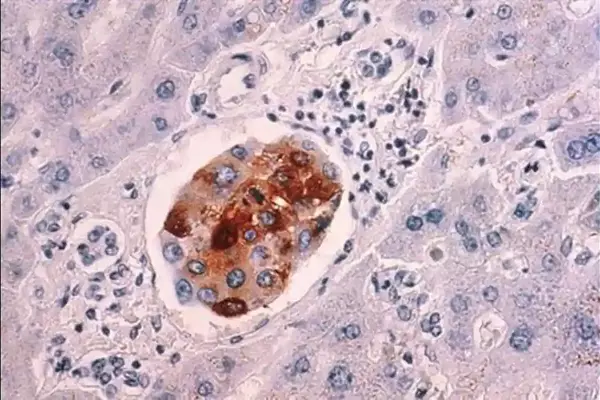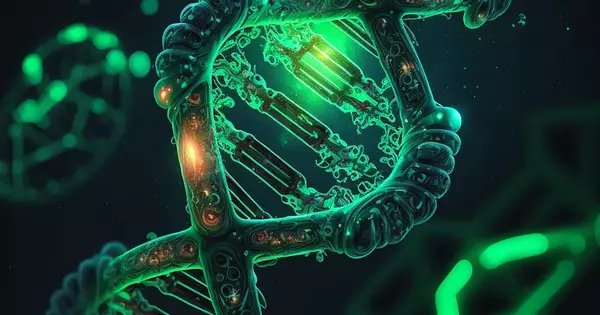There has been some research on using artificial DNA or DNA-based therapies to treat cancer. One approach involves using synthetic DNA or RNA to interfere with the expression of specific genes that are involved in the growth and survival of cancer cells. This can be done by delivering the synthetic DNA or RNA directly to the cancer cells, where it can bind to the target genes and block their expression.
Another approach involves using artificial DNA to deliver therapeutic genes to cancer cells. This can be done using gene therapy, which involves introducing healthy copies of genes into cells to compensate for missing or faulty genes. While there has been some promising research in this area, it is still in the early stages and more studies are needed to determine the effectiveness and safety of these approaches for treating cancer.
The University of Tokyo researchers used synthetic DNA to target and kill cancer cells in an entirely novel way. In lab tests, the method was effective against human cervical cancer and breast cancer-derived cells, as well as malignant melanoma cells from mice. The researchers created a pair of hairpin-shaped, cancer-killing DNA molecules using chemical synthesis. When the DNA pairs were injected into cancer cells, they formed connections with microRNA (miRNA) molecules, which are overproduced in some cancers.
The findings of this study are encouraging for doctors, drug discovery researchers, and cancer patients, as we believe they will provide new options for drug development and medication policies. Based on the findings of this research, we will pursue drug discovery and thoroughly investigate drug efficacy, toxicity, and potential administration methods.
Kunihiko Morihiro
They unraveled and joined together after being linked to the miRNA, forming longer chains of DNA that triggered an immune response. This response not only killed the cancer cells but also prevented cancerous tissue from growing further. This method is different from conventional anticancer drug treatments and is hoped to bring about a new era of drug development.
Cancer is a sadly common global health concern, and current treatment methods have limitations. Drugs based on nucleic acids, or the vital information-carrying molecules DNA and RNA, can control the biological functions of cells and are expected to transform the future of medicine and provide a significant boost to efforts to overcome cancer and other difficult-to-treat illnesses caused by viruses and genetic diseases.
A research team led by Assistant Professor Kunihiko Morihiro and Professor Akimitsu Okamoto from the Graduate School of Engineering at the University of Tokyo was inspired to develop a new anticancer drug using artificial DNA.

“We thought that if we could create new drugs that work by a different mechanism of action than conventional drugs, they might be effective against cancers that were previously untreatable,” Okamoto explained.
The use of nucleic acid drugs for cancer treatment has been difficult because it is difficult to distinguish between cancer cells and other healthy cells. This means that if healthy cells are attacked inadvertently, the patient’s immune system may suffer. However, the team was able to create a hairpin-shaped DNA strand that can activate a natural immune response to target and kill specific cancerous cells for the first time.
Cancer cells can overexpress, or make too many copies of, certain DNA or RNA molecules, causing them to not function normally. The team created artificial oncolytic (cancer-killing) hairpin DNA pairs called oHPs. These oHPs were triggered to form longer DNA strands when they encountered a short (micro) RNA called miR-21, which is overexpressed in some cancers. Typically, oHPs don’t form longer strands due to their curved hairpin shape. However, when the artificial oHPs enter a cell and encounter the target microRNA, they open up to combine with it and form a longer strand. This then causes the immune system to recognize the presence of the overexpressed miR-21 as dangerous and activate an innate immune response, which ultimately leads to the death of the cancer cells.
The tests were successful against overexpressed miR-21 in human cervical cancer cells, human triple-negative breast cancer cells, and mouse malignant melanoma cells. “The formation of long DNA strands found by this research group as a result of the interaction between short DNA oHPs and overexpressed miR-21 is the first example of its use as a selective immune amplification response that can target tumor regression, providing a new class of nucleic acid drug candidates with a mechanism that is completely different from known nucleic acid drugs,” Okamoto said.
“The findings of this study are encouraging for doctors, drug discovery researchers, and cancer patients, as we believe they will provide new options for drug development and medication policies. Based on the findings of this research, we will pursue drug discovery and thoroughly investigate drug efficacy, toxicity, and potential administration methods.” This research still has a long way to go before a treatment is available, but the team is confident in the benefits of nucleic acids for new drug discovery.














